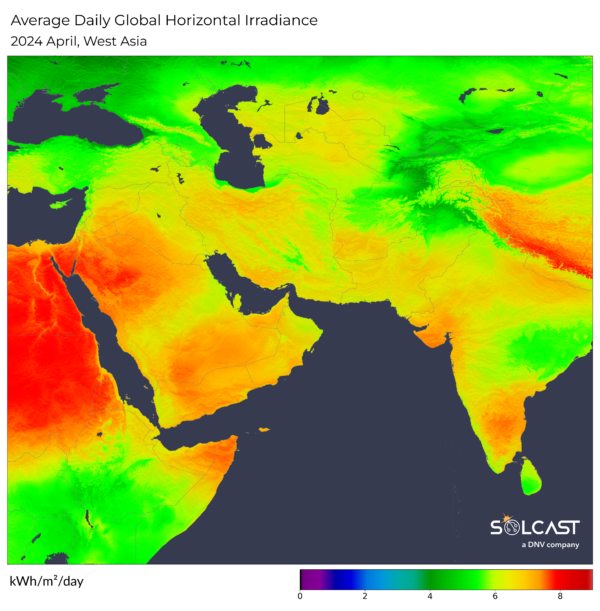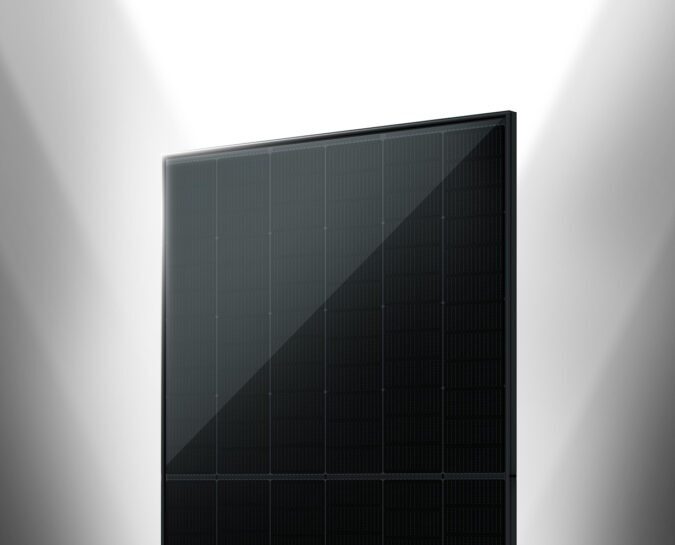Despite record rainfall in the middle of the month, areas of the Arabian Peninsula still saw above-average irradiance through April, with the UAE and parts of Saudi Arabia seeing irradiance about 5% above normal according to analysis completed using the Solcast API. At the same time, India experienced a strong split in irradiance impact, with sunnier-than-normal conditions in the South but cloudier central regions as high temperatures hit the country ahead of the monsoon season.

In mid-April, Dubai and the surrounding regions experienced their heaviest rainfall on record. Some areas received up to 2.5 times their annual rainfall in just 24 hours, leading to widespread flooding and damage, and unfortunate losses of life in Dubai and Oman. This extreme weather event was caused by a slow-moving mesoscale convective system that passed over the peninsula. While Yemen, Oman, and parts of Saudi Arabia saw reduced irradiance due to the heavy rains, the precipitation was not enough to prevent higher-than-normal irradiance levels in most other areas, including those immediately around the Persian Gulf.
Ahead of the monsoon season set to start at the end of May, India faced intense heatwaves in April. Central and northwestern India were spared the worst of the heat with outbreaks of heavy thunderstorms, sometimes severe with hail and gusty winds. These contributed to
cooler and cloudier conditions and also lowered irradiance levels in these regions. In contrast, the southern and northeastern parts of India experienced up to 15% more sunshine than usual due to drier conditions driven by anti-cyclonic circulation.

A high-pressure system over the Caspian Sea led to a notable increase in irradiance, with some areas experiencing over 30% more than the long term April average. Despite this significant rise, the absolute irradiance in this region remains lower compared to other areas, particularly northeastern Africa, which also saw increased irradiance atop its already high average levels.
Solcast produces these figures by tracking clouds and aerosols at 1-2km resolution globally, using satellite data and proprietary AI/ML algorithms. This data is used to drive irradiance models, enabling Solcast to calculate irradiance at high resolution, with typical bias of less than 2%, and also cloud-tracking forecasts. This data is used by more than 300 companies managing over 150GW of solar assets globally.
The views and opinions expressed in this article are the author’s own, and do not necessarily reflect those held by pv magazine.
This content is protected by copyright and may not be reused. If you want to cooperate with us and would like to reuse some of our content, please contact: editors@pv-magazine.com.



1 comment
By submitting this form you agree to pv magazine using your data for the purposes of publishing your comment.
Your personal data will only be disclosed or otherwise transmitted to third parties for the purposes of spam filtering or if this is necessary for technical maintenance of the website. Any other transfer to third parties will not take place unless this is justified on the basis of applicable data protection regulations or if pv magazine is legally obliged to do so.
You may revoke this consent at any time with effect for the future, in which case your personal data will be deleted immediately. Otherwise, your data will be deleted if pv magazine has processed your request or the purpose of data storage is fulfilled.
Further information on data privacy can be found in our Data Protection Policy.